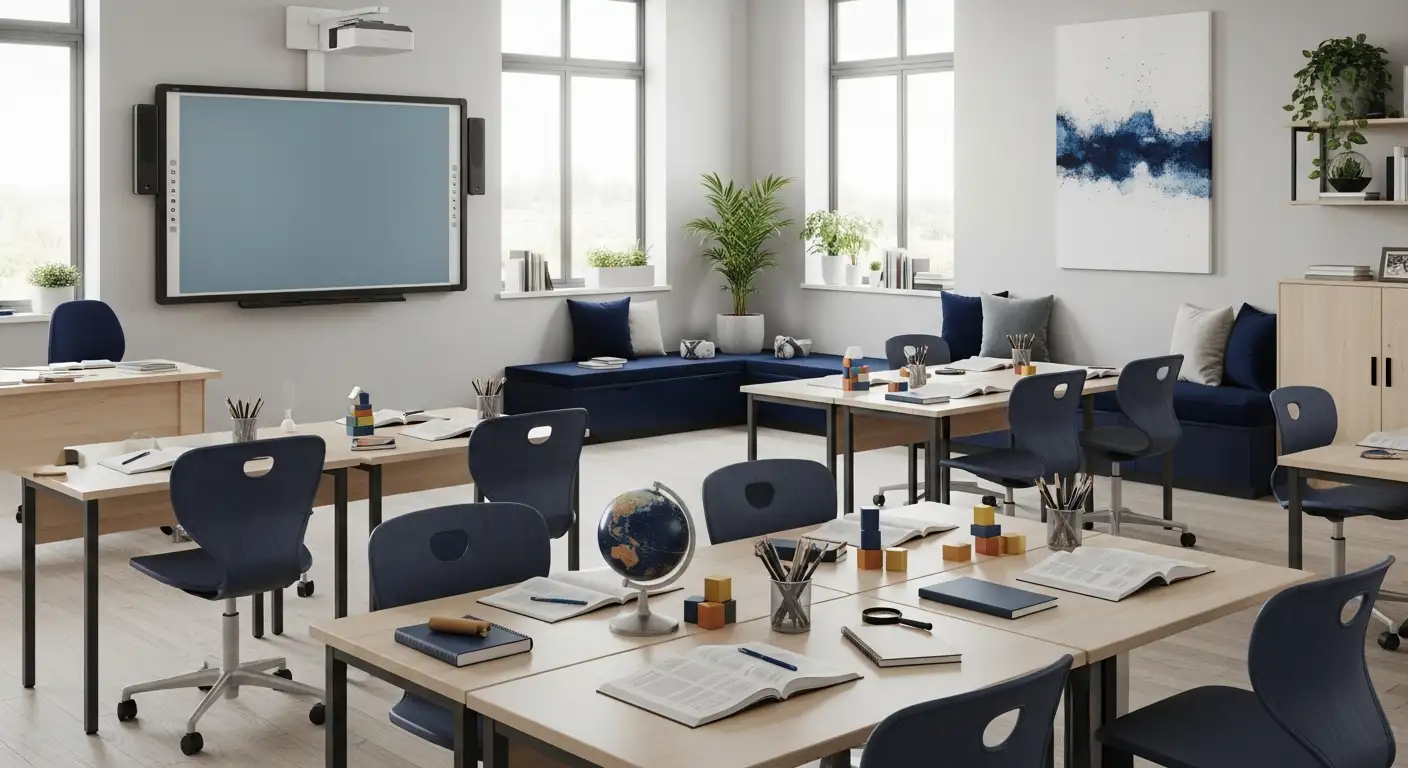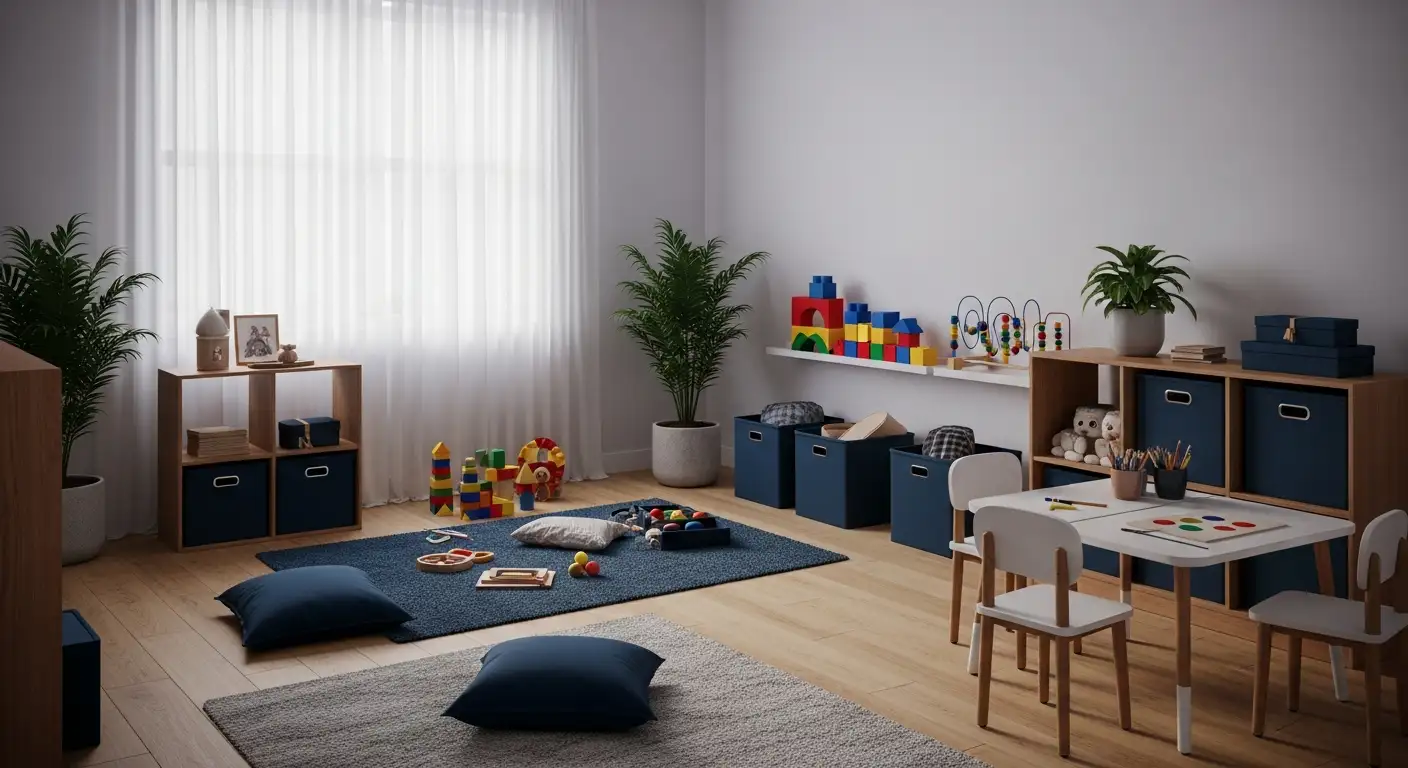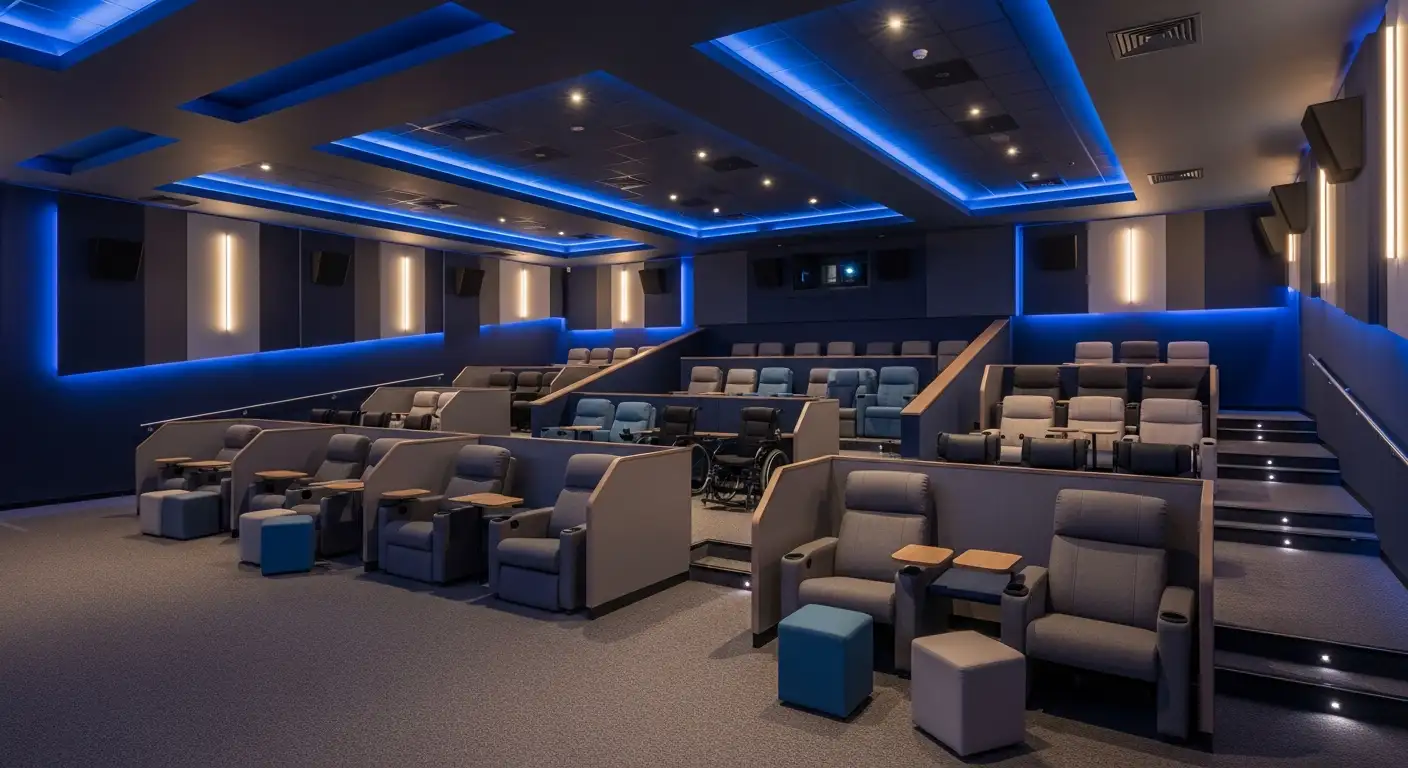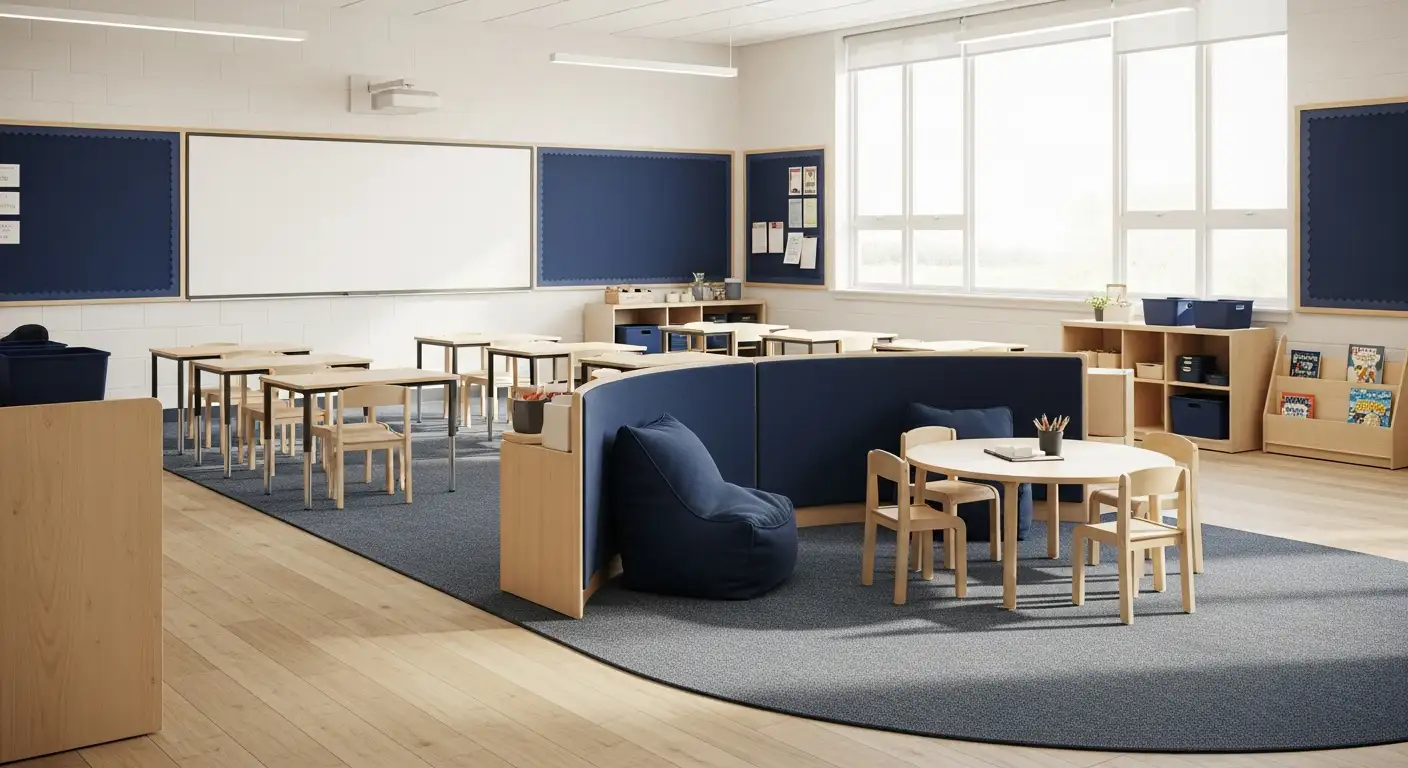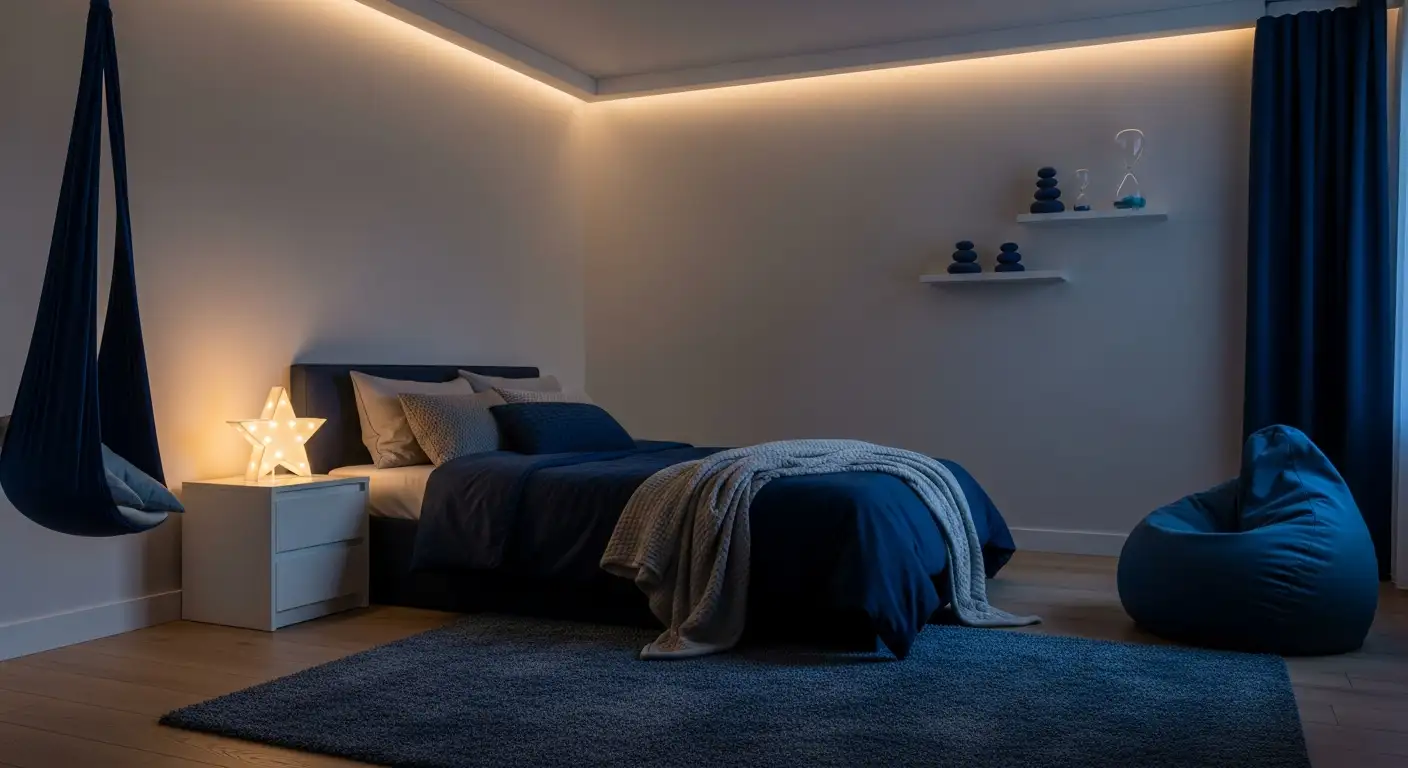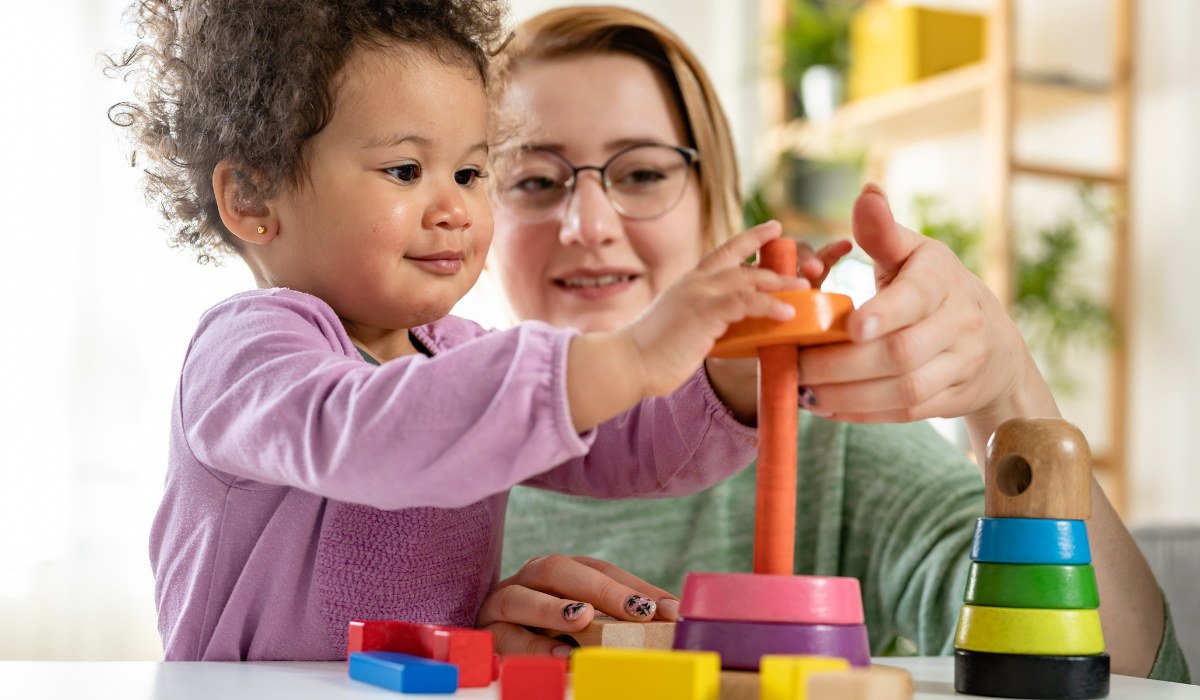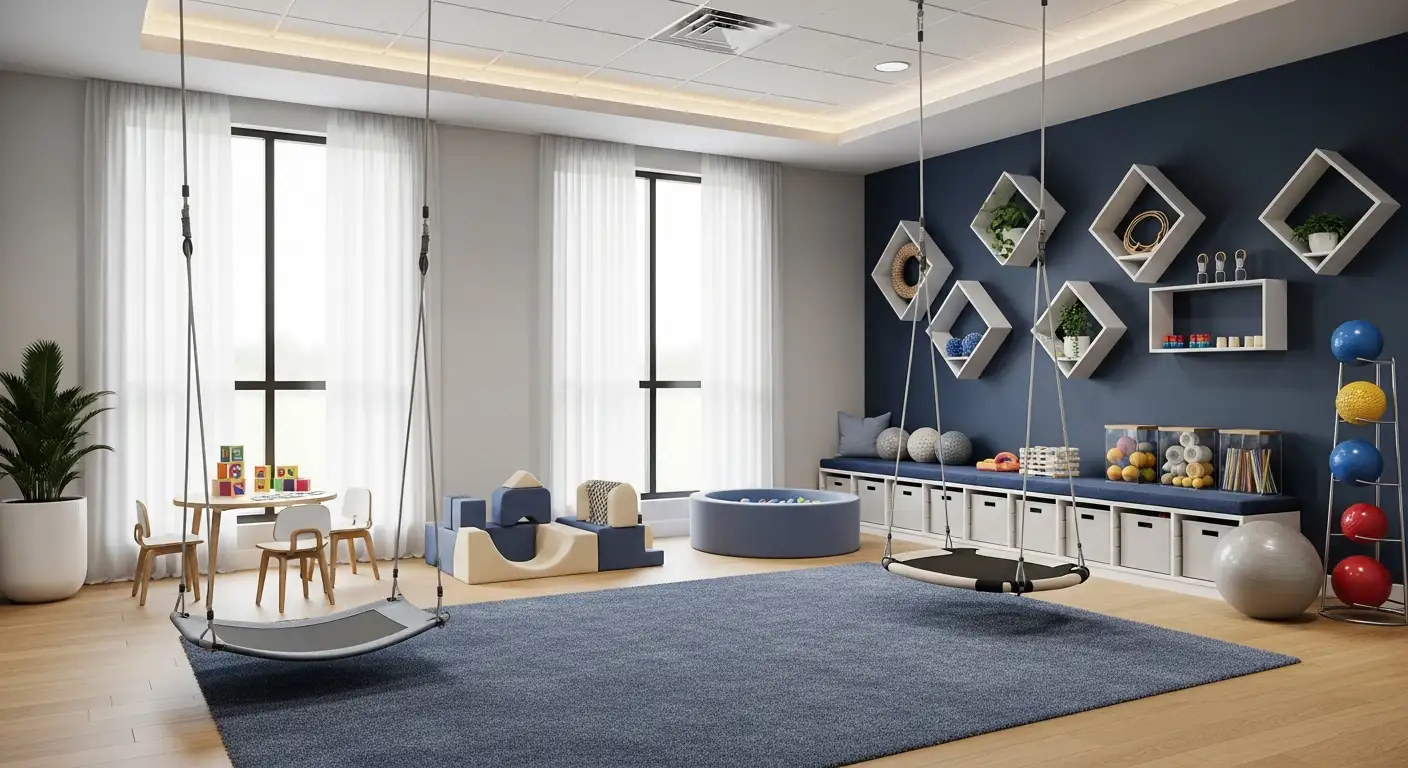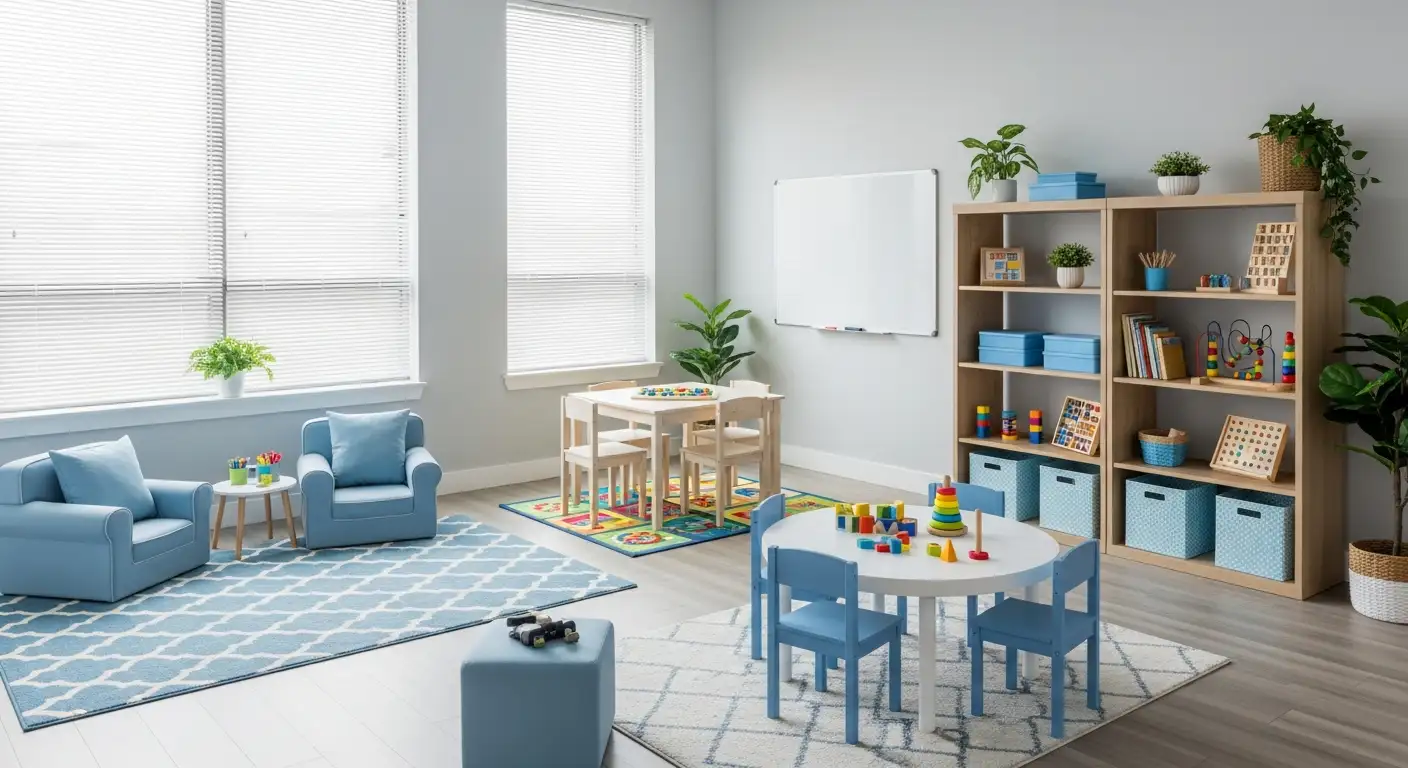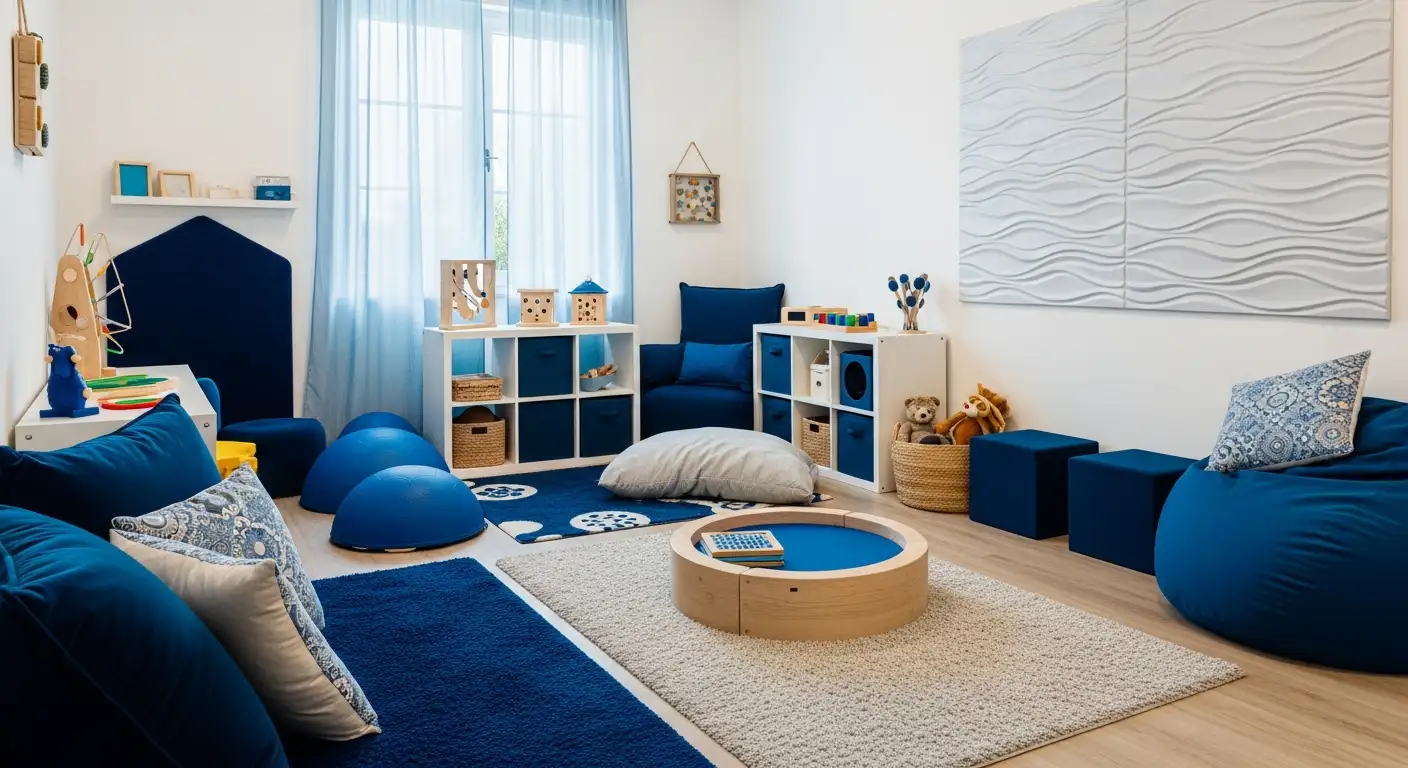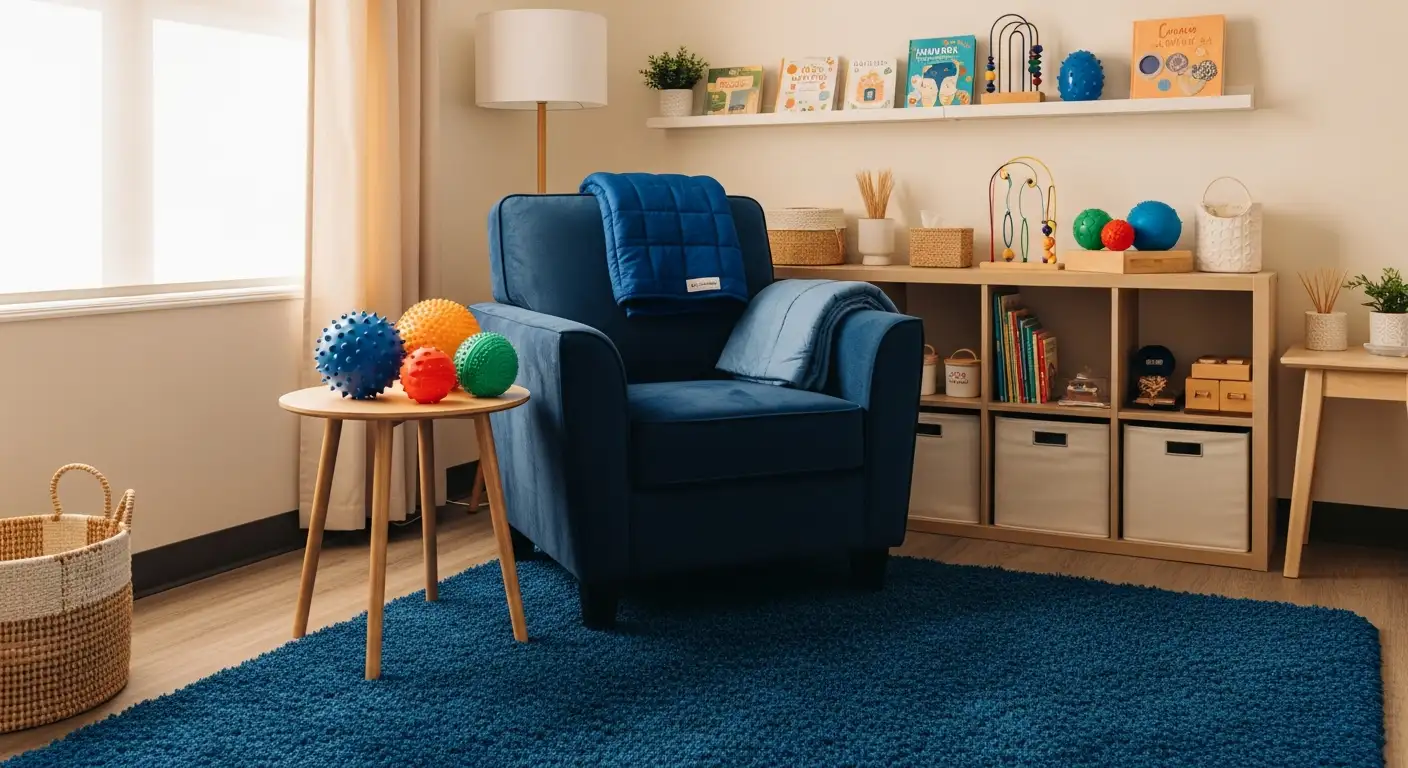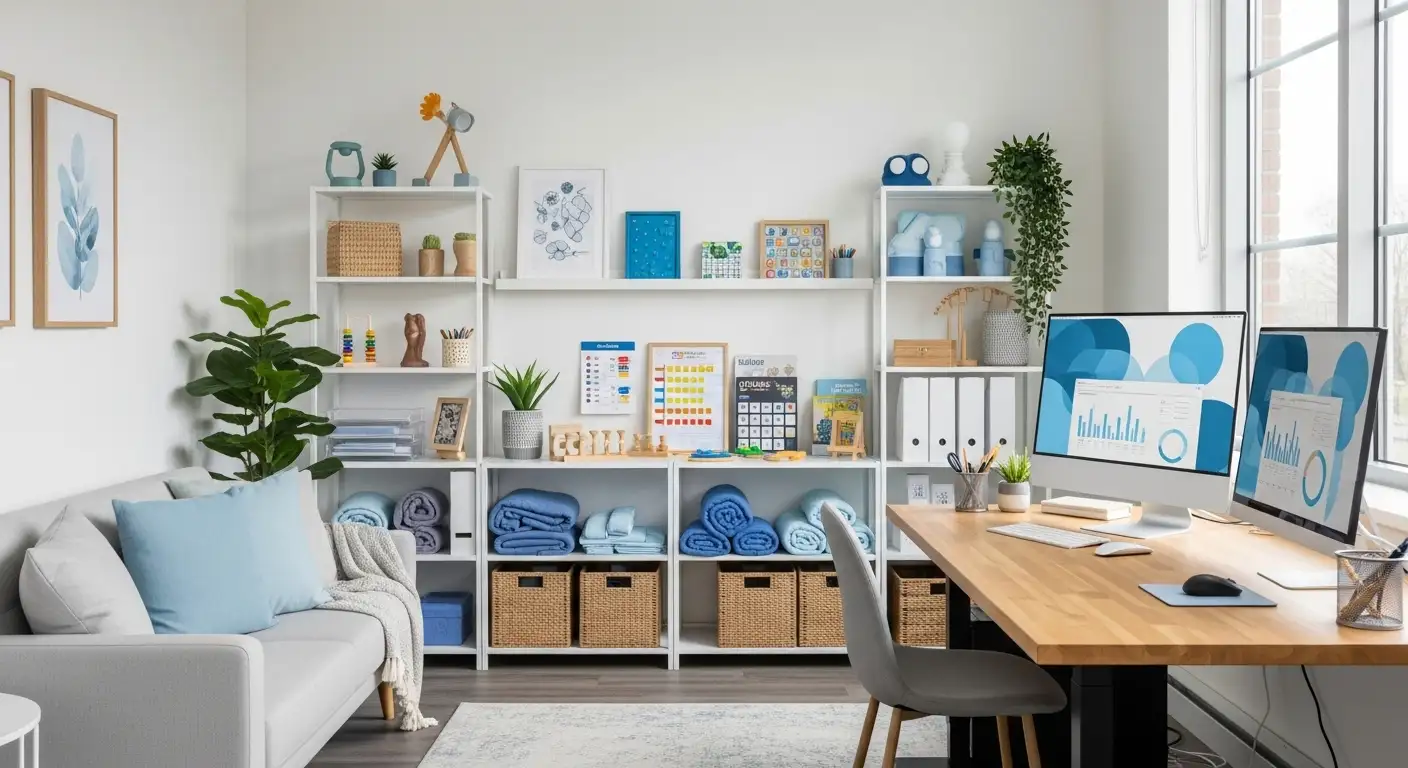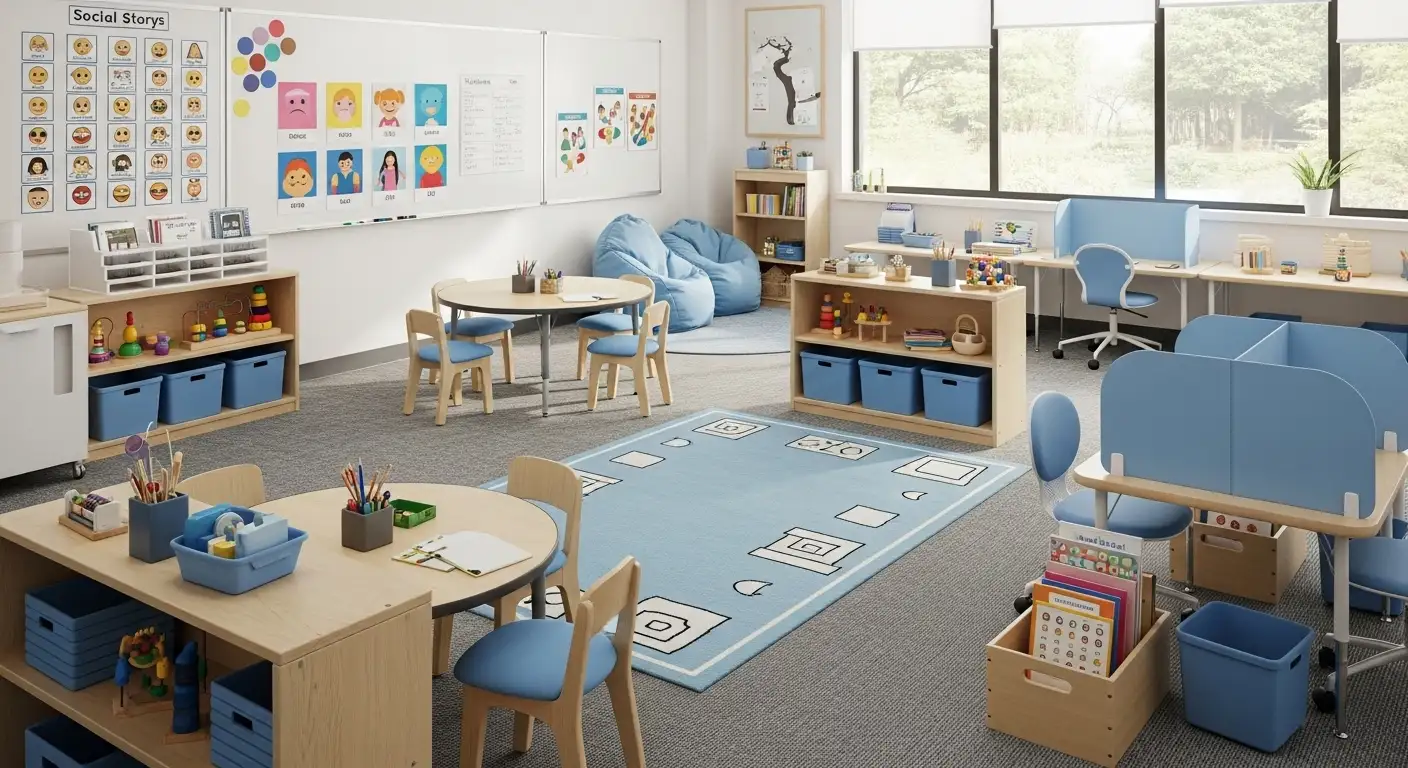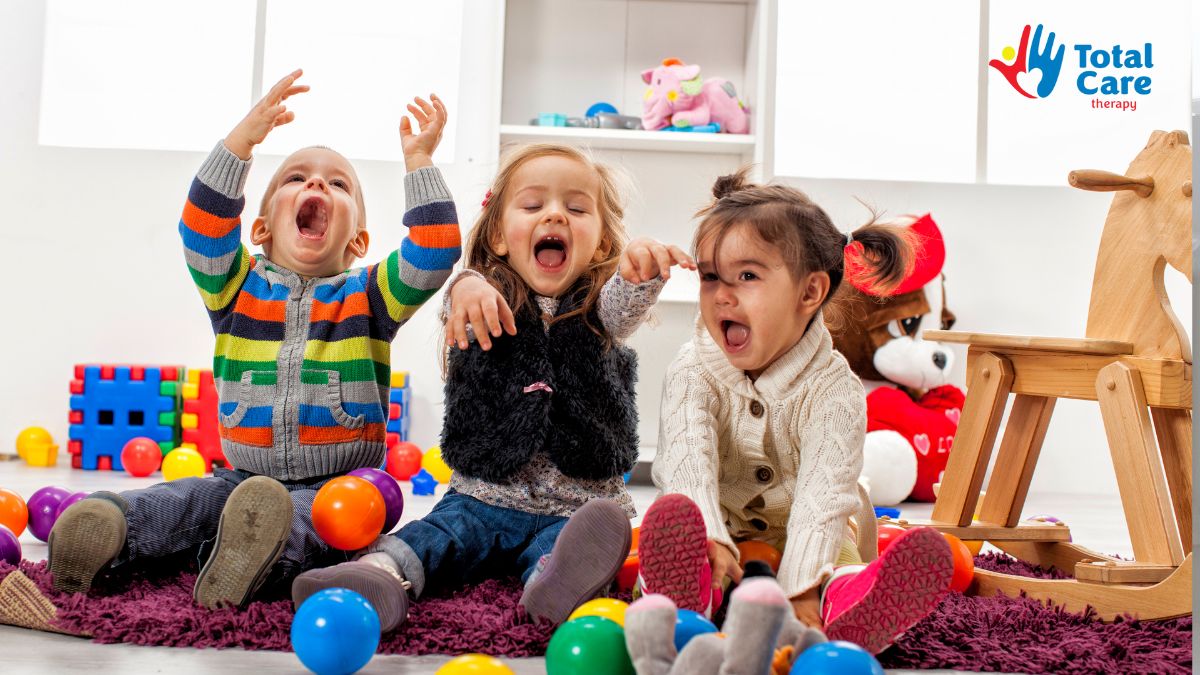How to Address Sensory Defensiveness in Autism
Understanding and Managing Sensory Challenges in Autism Spectrum Disorder

Introduction to Sensory Processing in Autism
Sensory processing differences are a core aspect of autism spectrum disorder (ASD), affecting how individuals perceive and respond to the sensory environment. Recognizing and addressing sensory defensiveness and other sensory challenges is crucial for supporting individuals with autism to participate fully and comfortably in daily life. This article explores the nature of sensory defensiveness, common signs and symptoms, effective management strategies, and evidence-based approaches tailored to individual sensory profiles.
The Foundations of Sensory Processing in Autism
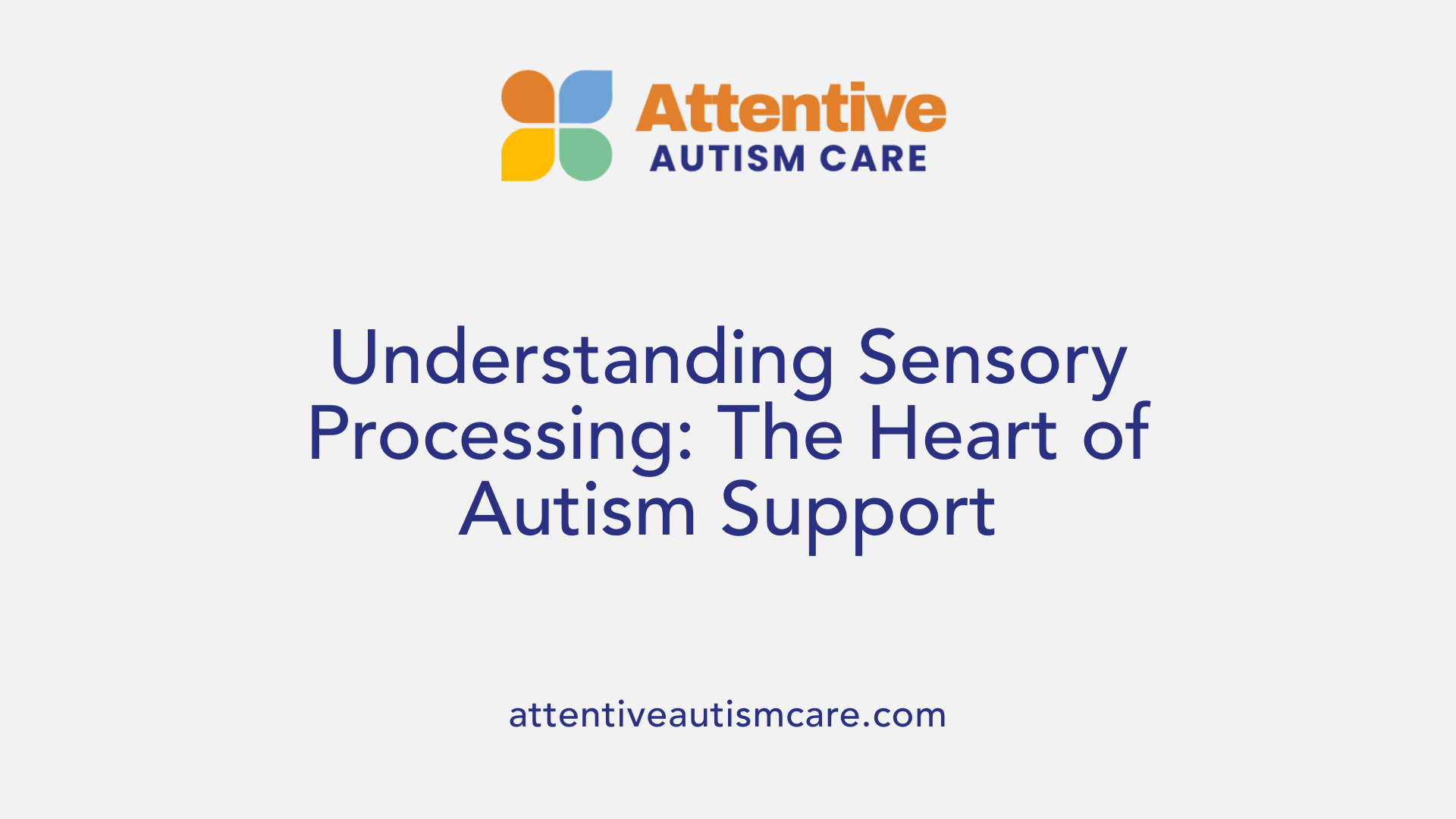
What is sensory defensiveness in autism?
Sensory defensiveness is a common feature among individuals with autism spectrum disorder (ASD). It refers to an over-reactive or overly sensitive response to everyday sensory stimuli such as touch, sounds, lights, textures, or movement. Children with sensory defensiveness may react negatively to stimuli that typically do not bother most people. For example, they might cover their ears to block out noise, avoid certain fabrics because they feel uncomfortable, or become overwhelmed by busy or bright environments.
This hypersensitivity can span across various sensory systems including tactile (touch), auditory (sound), visual (sight), vestibular (balance and movement), and proprioceptive (body position). It often leads to reactions like withdrawal, escalation into meltdowns, or difficulty functioning in typical settings.
Sensory defensiveness is highly prevalent among children with autism, with research indicating that up to 95% of children with ASD experience some form of sensory processing difficulty. These sensitivities can significantly affect daily activities, social interactions, and emotional well-being.
To manage sensory defensiveness, interventions such as occupational therapy and personalized environmental modifications are essential. Strategies like sensory diets—carefully planned activities that provide the right kinds of sensory input—help children regulate their responses. Additionally, tailored strategies that respect each child's unique sensory profile can improve their comfort, self-regulation, and ability to engage in everyday life.
Understanding and supporting sensory processing differences in children with ASD is fundamental in promoting their overall development and social integration.
Understanding Sensory Differences in Autism
What are the different ways sensory processing can differ in individuals with autism?
People with autism often experience a wide range of sensory sensitivities and hyposensitivities. Sensory sensitivities, or hypersensitivities, mean that certain sensory stimuli—such as bright lights, loud noises, strong smells, or specific textures—are overwhelming or uncomfortable. For example, a child might become distressed by fluorescent lighting or be bothered by certain fabrics against their skin.
On the other hand, hyposensitivity, or under-responsiveness, can cause individuals to seek out more intense sensory input. They might crave loud sounds, bright flashing lights, or intense movement to meet their sensory needs. This can manifest as a constant desire for movement, loud talking, or a fascination with spinning objects.
These differences are highly individualized and can fluctuate based on the environment or internal states, requiring tailored strategies for support.
How do sensory overload and under-responsiveness impact daily life?
Sensory overload occurs when the sensory stimuli in an environment become too intense or plentiful for the individual to process comfortably. This can lead to overwhelming feelings, anxiety, behavioral outbursts, or shutdowns. Common signs include covering ears or eyes, withdrawing from social situations, or experiencing meltdowns.
Conversely, under-responsiveness results in a reduced reaction to stimuli, which might cause a person to miss important cues like pain or hunger. They may constantly seek additional input through behaviors like touching everything, making loud noises, or flapping their hands.
Both conditions greatly affect daily functioning. Overload can make participation in routine activities difficult, while under-responsiveness can lead to neglect of self-care and safety concerns.
What are common signs of sensory processing differences in individuals with autism?
Recognizing the signs of sensory processing differences is vital for providing appropriate support. Common signs include:
- Sensory over-responsiveness:
- Avoidance of certain textures, lights, or sounds
- Covering ears or eyes
- Meltdowns or tantrums in busy or noisy environments
- Anxiety related to sensory stimuli
- Sensory under-responsiveness:
- Lack of response to pain, cold, or hunger
- Constant movement or fidgeting to seek extra input
- Drawn to loud noises or bright lights
- Preference for intense sensory experiences like spinning or swinging
Additionally, these individuals may have fragmented perceptions of their environment, perceive distorted views, or react in atypical ways to sensory stimuli, which can interfere with social interactions and daily activities.
How can understanding these sensations improve support strategies?
Understanding each individual's unique sensory profile allows caregivers and educators to modify environments and interactions effectively. For example, reducing unnecessary stimuli such as natural lighting instead of fluorescent lights or providing noise-canceling ear protection can alleviate overload.
Incorporating sensory supports like weighted blankets, fidget toys, or scheduled sensory breaks helps regulate arousal levels. Employing familiar routines and clear communication about upcoming changes also minimizes stress.
Further, respecting sensory preferences and sensitivities by choosing comfortable clothing, offering preferred sensory activities, and allowing self-advocacy fosters independence and comfort. Collaborative approaches based on sensory profiles can significantly enhance participation, reduce anxiety, and improve overall well-being for individuals with autism.
Manifestations of Tactile Defensiveness and Its Challenges
How does tactile defensiveness manifest in autism, and what challenges does it cause?
Tactile defensiveness in children with autism presents through heightened sensitivities or aversions to common tactile stimuli. This can include reactions to wearing certain fabrics, being touched unexpectedly, or engaging in messy or textured play. Children often respond with discomfort, such as pulling away, crying, or even lashing out when touched or when stimuli are overwhelming.
These sensory differences are not just about dislike but involve real challenges in processing tactile information, which can interfere with everyday activities. For example, a child might refuse to wear certain clothing because of uncomfortable textures or resist bathing due to skin sensations. Such sensitivities can complicate routines like dressing and self-care, often leading to increased frustration and behavioral outbursts.
Tactile defensiveness is closely linked to behaviors such as self-stimulatory actions—commonly called stimming—including hand-flapping, body-rocking, and spinning. While these behaviors can serve as self-regulation, they may also interfere with social interactions or other activities.
This sensory over-responsiveness can also lead to social avoidance, as children might shy away from hugs or physical contact, affecting social bonding and communication.
Addressing these challenges requires a thoughtful approach. Strategies include providing deep pressure input through weighted blankets or massages, informing children before touch to reduce anxiety, and choosing fabrics that are comfortable for sensitive skin. Overall, understanding each child's unique sensory profile helps in developing personalized interventions.
By accommodation and targeted strategies, it is possible to lessen the discomfort associated with tactile defensiveness, promoting better engagement in daily routines and enhancing social interactions. Recognizing these manifestations early and adapting environments accordingly can significantly improve quality of life for children with sensory processing differences.
Managing Overwhelm: Recognizing and Responding to Sensory Overload

What does sensory overload look like in autism, and how can it be recognized?
Sensory overload in autism is a response to an excess of sensory stimuli that overwhelms an individual’s ability to process incoming information. This situation can arise from various sources such as bright lights, loud sounds, intense smells, or tactile sensations. When overwhelmed, autistic individuals often display behaviors indicating distress or discomfort.
Common signs include covering their ears or eyes, withdrawing from the environment, or exhibiting agitation and meltdowns. Physical reactions like pounding hearts, sweating, or nausea may also occur. Some may engage in repetitive or self-injurious behaviors as a way to cope.
Because each person's sensory sensitivities and triggers are unique, recognizing these signs requires careful observation of behavioral and physical cues. Many autistic individuals experience both hypersensitivity (over-responsiveness) and hyposensitivity (under-responsiveness) across different senses, which further complicates identification.
Creating an awareness of these signs is crucial for timely intervention. Setting up sensory-friendly environments—such as quiet corners, dimmed lighting, and the use of noise-canceling headphones—can provide relief. Equally important is using tools and strategies like calming routines, deep pressure techniques, and structured breaks to help individuals regulate and recover from sensory overload.
Creating Sensory-Friendly Environments and Accommodations
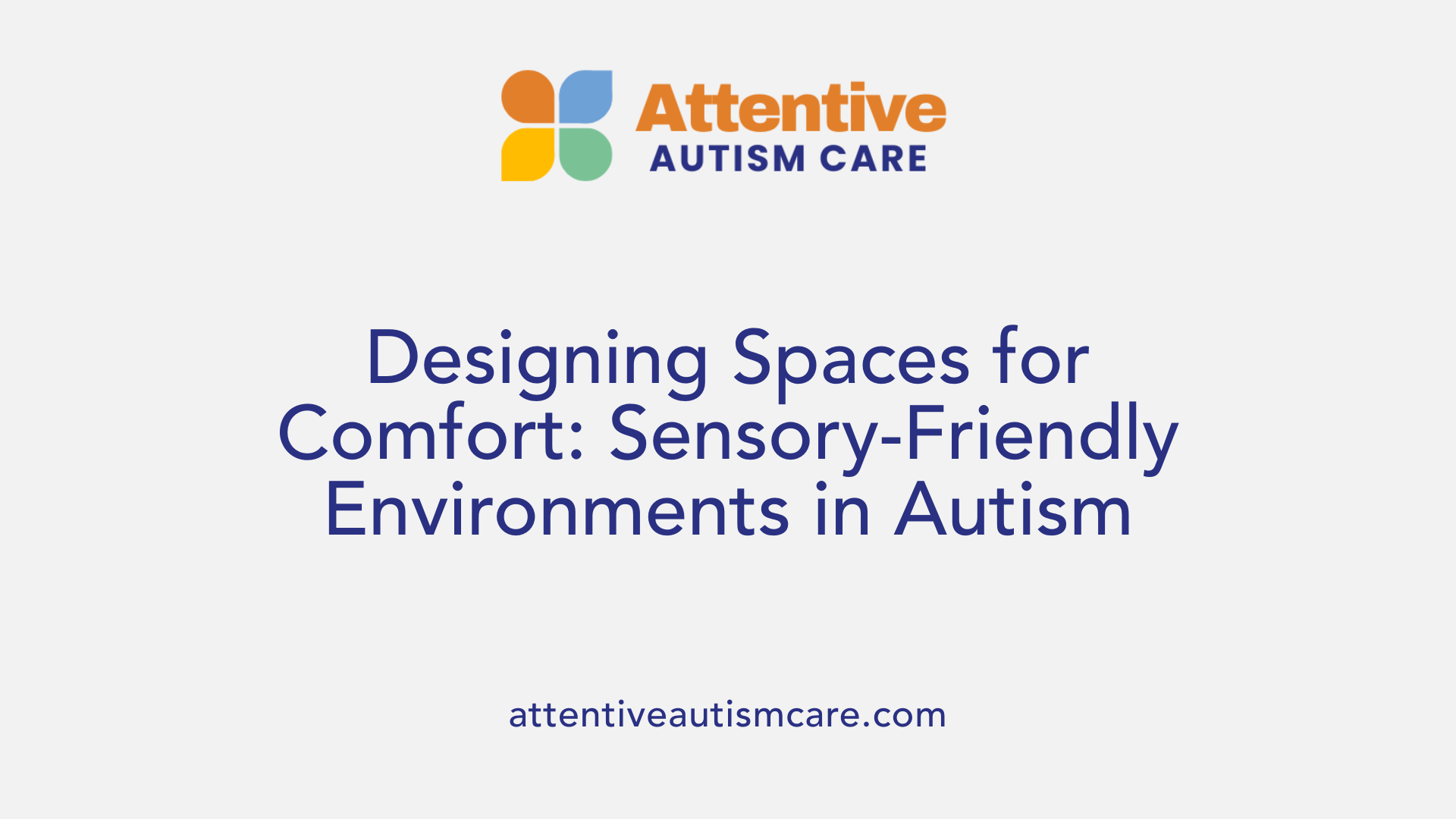
How can accommodations support individuals with sensory sensitivities in autism?
Supportive environments tailored to sensory sensitivities play a critical role in helping individuals with autism manage their unique challenges. Accommodations typically involve modifying the physical space and routines to reduce overwhelming stimuli and promote comfort.
For children and adults with hypersensitivity, adjustments might include providing designated sensory-friendly areas with dim lighting, soft textures, and minimal noise. These spaces offer a refuge where they can retreat when feeling overwhelmed. Using tools like weighted blankets, noise-canceling headphones, or tactile toys can also help regulate sensory input.
On the other hand, for those with hyposensitivity who seek more stimulation, accommodations may incorporate more engaging sensory activities, such as movement breaks, textured surfaces, or access to fidget items. These supports promote sensory input that helps them stay alert and engaged.
Consistent, predictable routines and clear communication significantly decrease anxiety associated with unpredictable or abrupt changes. Visual supports like visual schedules, social stories, or cue cards help individuals understand what to expect, easing transitions and reducing stress.
Involving families, teachers, therapists, and support staff in creating personalized plans ensures strategies match the individual's preferences and sensitivities. This collaborative effort helps foster an environment where individuals can participate actively, feel safe, and develop greater self-regulation.
Overall, thoughtful accommodations empower individuals to better process sensory input, improve participation in daily life activities, and support emotional well-being.
Use of sensory tools and supports
Sensory tools serve as practical aids to help manage sensory processing differences. Items such as weighted vests, squeeze balls, textured mats, and chew tubes provide calming proprioceptive input.
Occupational therapists often recommend sensory diets—individualized plans that incorporate specific sensory activities into daily routines. These may include swinging, bouncing, or tactile play, designed to maintain optimal arousal levels.
Technology also plays a part, with apps offering guided relaxation or mindfulness exercises suited to sensory needs. Additionally, adjustable lighting, tinted glasses, or sound-muffling curtains can be used to control sensory environments.
Implementation of sensory supports relies on thorough assessment and ongoing adjustments to meet changing needs. Parents and caregivers are encouraged to experiment with different tools and strategies to identify what best supports their loved ones.
The role of predictable routines and communication
Structured routines reduce the unpredictability that often triggers sensory overload and anxiety. Consistent daily schedules help individuals anticipate and prepare for upcoming events.
Clear communication, using concrete language and visual aids, ensures understanding, especially for children with communication difficulties. Informing the individual about upcoming changes before they happen promotes a sense of control.
Visual supports, including schedules, social stories, and cue cards, enhance comprehension and decrease frustration during transitions. In settings like schools or therapy sessions, these tools improve participation and reduce behavioral challenges.
In summary, creating sensory-friendly environments involves a blend of environmental modifications, sensory supports, and effective communication. These strategies collectively foster a safe, predictable, and accommodating space where individuals with sensory sensitivities can thrive.
Effective Strategies to Manage Sensory Defensiveness
How can sensory defensiveness be treated or managed in autism?
Managing sensory defensiveness in children with autism requires a thoughtful combination of interventions tailored to each child's unique sensory profile. One of the most effective approaches involves the use of deep pressure techniques. Devices such as weighted blankets, vests, or backpacks provide firm, soothing tactile input that can help calm the nervous system and reduce tactile defensiveness.
Occupational therapists often incorporate sensory diets into daily routines. These personalized plans include activities like gentle squeezing, proprioceptive exercises, or heavy work tasks—such as pushing, pulling, or carrying objects—to promote self-regulation and help children gradually become more comfortable with tactile stimuli.
Creating a sensory-friendly environment is also crucial. This involves choosing fabrics that are soft and comfortable, minimizing overwhelming sensory inputs like bright lights or loud noises, and establishing predictable routines to foster a sense of safety. For example, natural lighting instead of fluorescent lights, using tinted glasses or earplugs, and decluttering spaces can significantly reduce sensory overload.
Effective communication plays a vital role as well. Informing the child before physical contact gives them a sense of control and prepares them emotionally. Incorporating active calming activities such as swinging, deep pressure squeezing, or resistive exercises can also help the child feel more grounded and in control of their sensory experience.
Overall, a combination of calming sensory input, environmental adjustments, and proactive communication strategies creates a supportive framework that can substantially minimize sensory defensiveness and foster greater comfort and participation in daily activities.
Evidence-Based Approaches for Managing Sensory Challenges
What are evidence-based methods for managing sensory challenges in autism?
Managing sensory difficulties in children with autism involves several scientifically supported approaches. Among these, sensory integration therapy (SIT), environmental modifications, and personalized sensory diets stand out.
Sensory integration therapy is designed to help children better process and respond to sensory input through controlled, playful activities. It uses equipment like swings, weighted vests, and ball pits to create opportunities for safe sensory exploration. Although research findings are mixed, many studies suggest that when delivered with high intensity and fidelity, SIT can improve sensory modulation, attention, and emotional regulation in some children.
Environmental modifications play a critical role in minimizing sensory overload and making spaces more comfortable. This includes adjustments like using natural or soft lighting instead of fluorescent lights, applying noise reduction tools such as earplugs or soundproofing, and creating quiet zones where children can retreat to when overwhelmed.
Adapting the environment also involves selecting appropriate clothing, reducing unnecessary visual stimuli, and providing sensory tools like fidget toys, weighted blankets, and calming textures. These modifications help children navigate their surroundings more easily and curtail distress caused by hypersensitivity or hyposensitivity.
Behavioral strategies, often facilitated by occupational therapists, focus on teaching children self-regulation and sensory modulation skills. Techniques include the use of sensory diets—customized plans that incorporate specific activities aimed at maintaining optimal arousal levels—and strategies like deep pressure, heavy work tasks, and sensory breaks.
Implementing these methods requires thorough assessment and ongoing monitoring to tailor interventions to each child's unique sensory profile. The combination of therapy, environmental adjustments, and behavioral techniques can significantly enhance a child's comfort and functionality. This integrated approach helps reduce sensory-related anxiety, improves daily participation, and supports better social and developmental outcomes.
| Approach | Description | Evidence Level |
|---|---|---|
| Sensory Integration Therapy | Use of equipment to promote sensory processing through playful activities | Moderate evidence; requires high fidelity |
| Environmental Modifications | Adjustments to lighting, sound levels, and physical objects in the environment | Strong practical support |
| Sensory Diets | Personalized activity plans to regulate sensory arousal levels | Supportive but individualized |
Understanding and applying these evidence-based approaches can create a more supportive environment that respects each child's sensory needs, ultimately fostering greater comfort, participation, and quality of life.
The Importance of Individualized Support and Assessment
How can sensory defensiveness be treated or managed in autism?
Managing sensory defensiveness in children with autism involves a variety of tailored strategies to help them regulate their responses to tactile stimuli. One effective approach is the use of deep pressure techniques, such as weighted blankets, vests, or backpacks. These tools provide calming proprioceptive input, helping the nervous system to relax and reducing tactile defensiveness.
Occupational therapy plays a crucial role in this process. Therapists often incorporate sensory diets—personalized activity plans that include sensory input suited to the child's needs—and sensory integration therapy, which systematically helps children gradually adapt to sensory stimuli through controlled exposure and skill development.
Creating a sensory-friendly environment is also essential. This can include selecting comfortable fabrics, reducing loud or overwhelming stimuli, and establishing predictable routines to minimize unexpected sensory triggers.
Involving children in calming, active activities like heavy work exercises—pushing or pulling resistance-based tasks—can enhance their sense of control and body awareness. Additionally, giving the child advance notice before physical contact or touch can reduce anxiety and improve cooperation.
By combining these individualized strategies, children with tactile defensiveness can experience less distress and develop healthier sensory coping mechanisms.
Supporting Self-Advocacy and Long-Term Management
How can accommodations support individuals with sensory sensitivities in autism?
Accommodations play a crucial role in helping individuals with sensory sensitivities on the autism spectrum manage their everyday experiences more comfortably. By creating tailored environments, these strategies help reduce stress and improve overall well-being.
Sensory-friendly spaces are designed to minimize overwhelming stimuli. This includes adjusting lighting—using soft, natural light instead of fluorescent or harsh bulbs—and reducing background noise through soundproofing or noise-canceling devices.
Providing sensory tools complements environmental adjustments. Weighted blankets, fidget toys, and noise-canceling headphones serve to soothe over-reactive senses or engage under-responsive ones.
Visual supports and clear routines help establish predictability. Visual schedules and social stories reassure and prepare individuals for upcoming activities, decreasing unpredictability that can lead to sensory overload.
Allowing movement breaks and offering alternative seating options such as stability balls or cushion chairs support self-regulation during sensory challenges. These strategies enable individuals to manage sensory input effectively and stay engaged.
Collaboration with families, educators, and support professionals ensures that strategies are personalized. This team approach considers each person’s unique sensory profile—whether they are hypersensitive or hyposensitive—and adapts accommodations accordingly.
Importantly, these interventions encourage active participation, empowering individuals to advocate for their needs. Recognizing personal sensory triggers and effective coping mechanisms builds confidence and independence.
In summary, tailored accommodations foster environments where individuals with autism can better navigate sensory stimuli, leading to improved social, emotional, and educational outcomes. They help make daily activities less overwhelming and more accessible, supporting long-term management and quality of life.
Conclusion: Emphasizing Empathy and Practical Support

How can sensory defensiveness be treated or managed in autism?
Managing sensory defensiveness in children with autism involves a multifaceted approach that is tailored to each child's unique sensory profile. One of the most effective strategies includes the use of deep pressure interventions. These can be delivered through weighted blankets, vests, or even backpacks, which provide calming proprioceptive input. This tactile input helps soothe the nervous system, reduce hypersensitivity, and promote calming, organized responses.
Occupational therapy plays a crucial role by customizing sensory diets and incorporating sensory integration techniques. Sensory diets are individualized plans that include activities designed to help children manage their sensory sensitivities, gradually increasing their tolerance to tactile stimuli. Therapy may also involve specific exercises like heavy work activities, which engage the proprioceptive system and support self-regulation.
Creating a sensory-friendly environment is essential. This includes selecting comfortable fabrics, reducing background noise, minimizing bright or flashing lights, and maintaining predictable routines. These modifications help lower the likelihood of overwhelming sensory overload and create a space where children feel safe.
In addition to environmental adaptations, fostering a sense of predictability and giving the child advance notice before physical contact can significantly diminish anxiety related to touch. Active calming activities, such as gentle massage, rocking, or sensory play, also help children develop coping strategies.
Understanding and respecting each child's individual sensory needs is fundamental. Caregivers and professionals should work collaboratively, observing responses and adjusting their approaches accordingly. Empowering children through familiar routines and sensory tools helps them gain confidence in managing their sensitivities.
Involving the family and community is crucial. Education about sensory processing differences fosters empathy and encourages supportive practices at home, school, and in the broader community.
In summary, addressing sensory defensiveness in autism requires patience, personalized planning, and a compassionate approach. Combining environmental modifications, therapeutic interventions, and active involvement helps children develop the skills to navigate their sensory world with greater comfort and confidence.
Why is understanding each child's sensory profile important?
Each child's sensory profile is unique, with specific sensitivities, preferences, and thresholds. Recognizing these differences ensures that support strategies are effective and respectful of individual needs. For example, some children may be hypersensitive to certain textures or noises, while others may seek intense sensory input to feel regulated.
Tailoring interventions to these individual differences enhances their effectiveness and helps prevent sensory overload or avoidance behaviors. It also promotes positive social interactions and reduces frustration for both children and caregivers.
How do caregivers, professionals, and community contribute?
Support from caregivers, healthcare providers, and the community creates a comprehensive safety net for children with sensory sensitivities. Caregivers can implement sensory-friendly routines and use comfort tools, while professionals like occupational therapists provide targeted therapies and guidance.
Community awareness and inclusive environments are equally vital. Schools, recreational centers, and public spaces that accommodate sensory needs foster participation and well-being. Resources such as sensory-friendly events, specialized therapies, and educational materials empower families and promote understanding.
Overall, a compassionate, informed, and collaborative approach makes a substantial difference in helping children with sensory processing challenges thrive.
Final Thoughts and Support Strategies
Addressing sensory defensiveness in autism requires a comprehensive, individualized approach that recognizes each person's unique sensory profile. Creating sensory-friendly environments, employing evidence-based interventions like sensory integration therapy, and fostering self-advocacy are critical for improving quality of life. Collaborating with occupational therapists, families, and educators ensures support strategies are tailored and effective. Empathy, patience, and understanding from caregivers and the community play vital roles in helping individuals with autism navigate sensory challenges successfully, promoting engagement, comfort, and social participation.
References
- Best Sensory Strategies for Handling Tactile Defensiveness
- Top 5 autism tips: managing sensory differences
- Interventions for Sensory Over-Responsivity in Individuals with ...
- Sensory issues - Autism Speaks
- Food selectivity and sensory sensitivity in children with autism ...
- Treating Sensory Processing Issues - Child Mind Institute
- Navigating Sensory Issues in Adults | A Guide for ADHD and Autism
- Sensory differences - a guide for all audiences
- Sensory Processing in Autism: A Review of Neurophysiologic Findings




